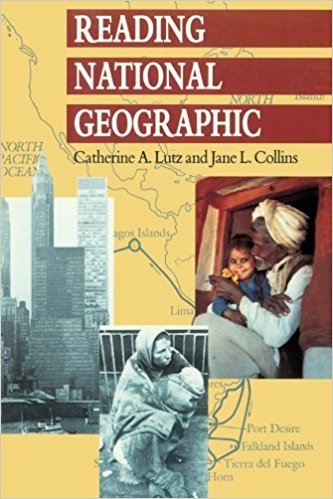National Geographic Bias, Painting a Pretty Picture for Upperclass Americans

- Reading National Geographic
- By Catherine A Lutz, Jane L Collins.
- Buy at amazon
while reading Wikipedia article on National Geographic (magazine) (on 2012-09-09) , this quote caught my eyes:
Lutz and Collins in their book “Reading National Geographic” argue that National Geographic is intimately tied to the American establishment and “cultivates ties to government officials and corporate interests”.[12] Rothenberg suggests that National Geographic, as a part of mainstream popular culture, has historically helped to articulate a particularly American identity in opposition to “both old Europe and primitive non-Western regions… an identity of civic and technological superiority but yet, a distinctly benign and friendly identity”.[13]
The book “Reading National Geographic” notes how photos are sometimes electronically manipulated.[14] In one photo of bare-breasted Polynesian women, the skin color was darkened.[14] Women with light skin have but only rarely appeared topless in the magazine.[14] The book also documents how NG photographers have encouraged their subjects to change costumes when their clothing was seen as “too drab” for the magazine.[14] Summarizing an analysis of NG photographs from 1950 to 1986, the authors argue the following themes: “The people of the third and fourth worlds are portrayed as exotic; they are idealized; they are naturalized and taken out of all but a single historical narrative; and they are sexualized. Several of these themes wax and wane in importance through the postwar period, but none is ever absent.”[15]
- Reading National Geographic
- By Catherine A Lutz, Jane L Collins.
- Buy at amazon
Here's the description of the book on amazon:
For its millions of readers, the National Geographic has long been a window to the world of exotic peoples and places. In this fascinating account of an American institution, Catherine A. Lutz and Jane L. Collins explore the possibility that the magazine, in purporting to teach us about distant cultures, actually tells us much more about our own.
Lutz and Collins take us inside the National Geographic Society to investigate how its photographers, editors, and designers select images and text to produce representations of Third World cultures. Through interviews with the editors, they describe the process as one of negotiating standards of “balance” and “objectivity,” informational content and visual beauty. Then, in a close reading of some six hundred photographs, they examine issues of race, gender, privilege, progress, and modernity through an analysis of the way such things as color, pose, framing, and vantage point are used in representations of non-Western peoples. Finally, through extensive interviews with readers, the authors assess how the cultural narratives of the magazine are received and interpreted, and identify a tension between the desire to know about other peoples and their ways and the wish to validate middle-class American values.
The result is a complex portrait of an institution and its role in promoting a kind of conservative humanism that acknowledges universal values and celebrates diversity while it allows readers to relegate non-Western peoples to an earlier stage of progress. We see the magazine and the Society as a key middlebrow arbiter of taste, wealth, and power in America, and we get a telling glimpse into middle-class American culture and all the wishes, assumptions, and fears it brings to bear on our armchair explorations of the world.